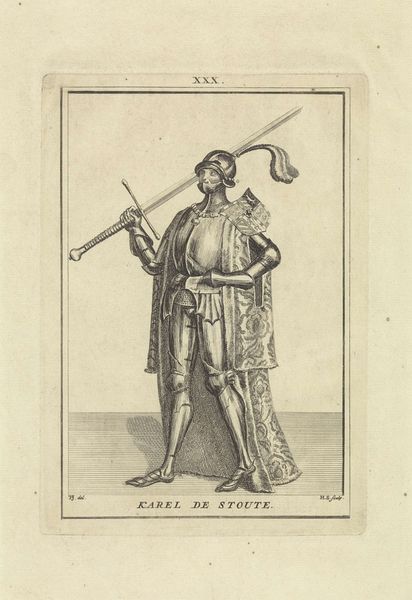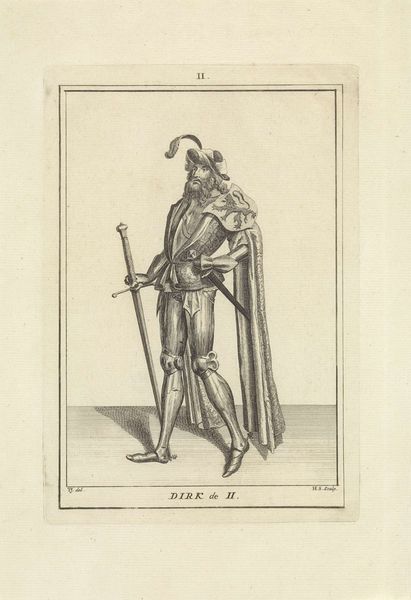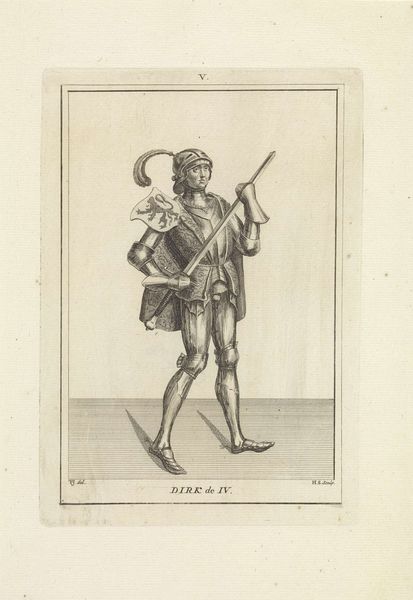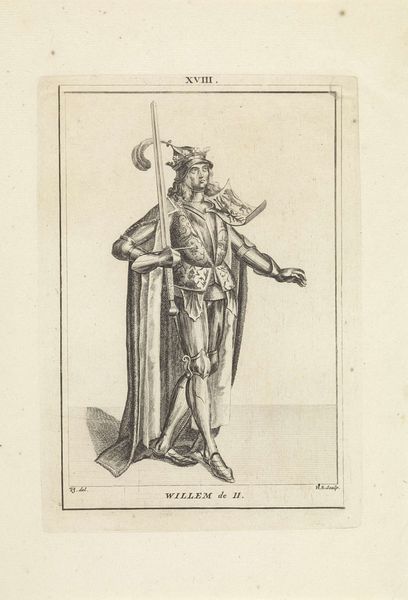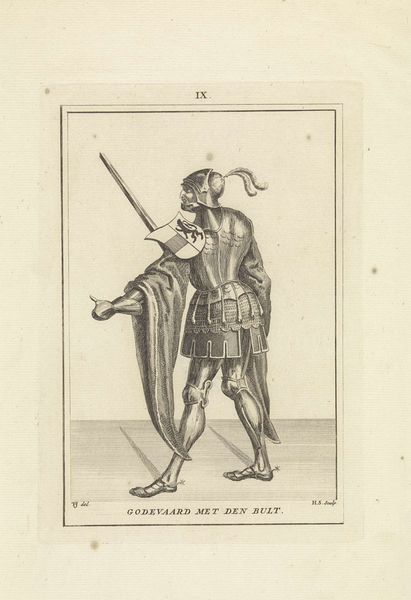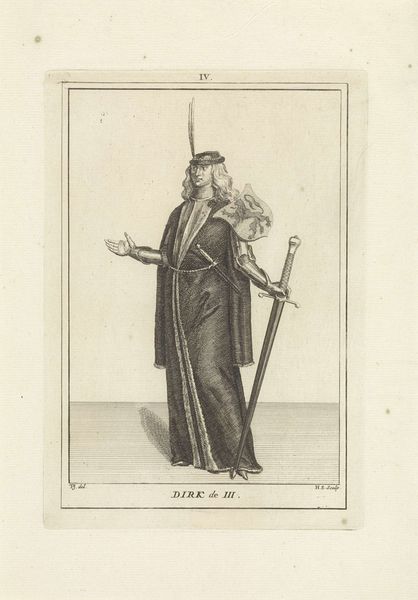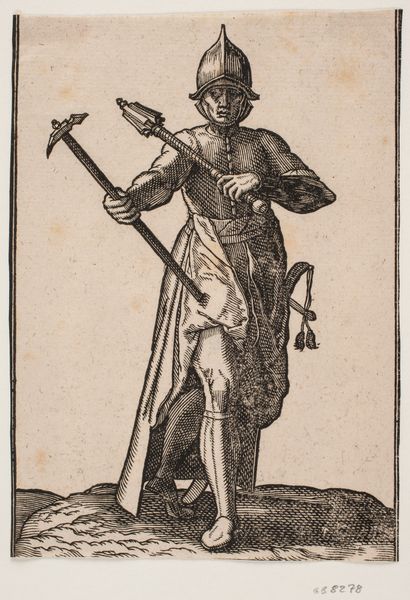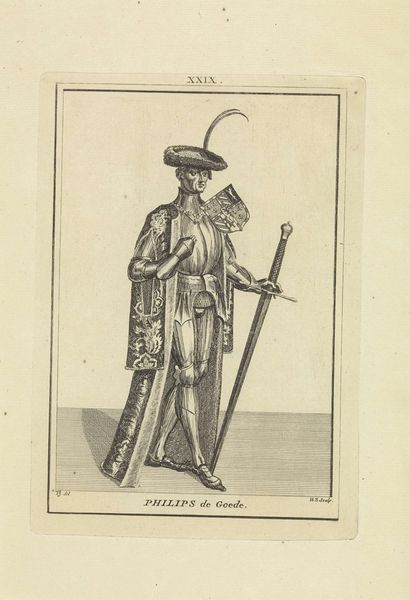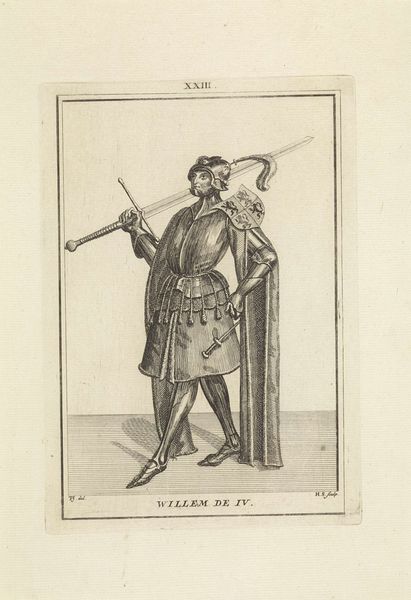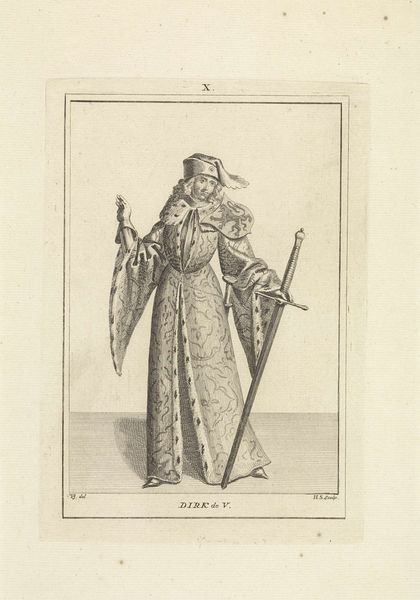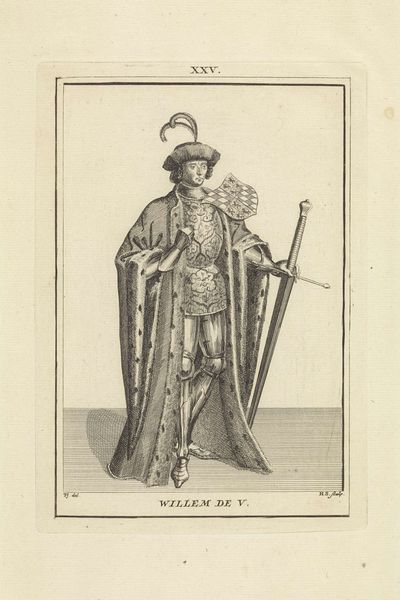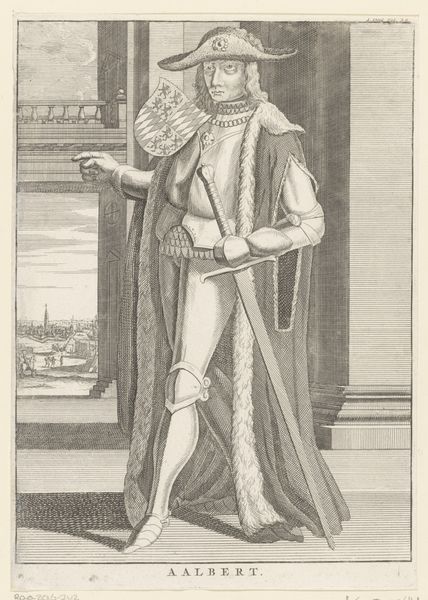
engraving
#
portrait
#
baroque
#
old engraving style
#
figuration
#
line
#
history-painting
#
engraving
Dimensions: height 192 mm, width 135 mm
Copyright: Rijks Museum: Open Domain
Editor: Here we have a 1745 engraving by Hendrik Spilman entitled "Portret van Floris I, graaf van Holland," or Portrait of Floris I, Count of Holland. It has a very linear, almost clinical feel. What catches your eye? Curator: The process of engraving is key here. The labor involved in meticulously incising those lines into the metal plate speaks volumes. It's not just about depicting Floris I, but about the social context of printmaking and its role in disseminating images of power. Consider, too, the engraver's position in the art world. Were they considered artisans, craftspeople, or artists? Editor: That's interesting. I hadn't considered the engraver's role in shaping our understanding of Floris. So, is it more about the medium than the message? Curator: I wouldn't separate them entirely. The very act of creating this image through engraving - a reproducible medium - democratizes access to power, even if the subject is an elite figure. But it also speaks to a culture that values reproduction and the mass dissemination of images. What does it tell us about consumption? Is this image designed for a mass market, or a select elite? Editor: So, it’s about who gets to own and see these images? Curator: Precisely! Think about the production, circulation, and consumption. Where was it made? Who paid for it? And who eventually possessed these prints? Editor: That's a completely different way of seeing this. I was initially focused on the subject matter. Curator: It is important to question not only what is being depicted but also how and why. Understanding the labor and materiality informs the “why.” I appreciate how looking at the historical modes of production can highlight how socio-economic systems have impacted cultural representations.
Comments
No comments
Be the first to comment and join the conversation on the ultimate creative platform.
